1. Alonso-Betanzos, A, Fontenla-Romero, O, Guijarro-BerdiГұas, B, HernГЎndez-Pereira, E, Andrade, M.I.P, JimГ©nez, E, et al (2003) An intelligent system for forest fire risk prediction and fire fighting management in Galicia.
Expert Systems With Applications, Vol. 25, No. 4, pp. 545-554.

2. Bot, K, and Borges, J.G (2022) A systematic review of applications of machine learning techniques for wildfire management decision support.
Inventions, Vol. 7, No. 1, pp. 15.

3. Chae, K.J, Lee, Y.R, and Park, J.H (2018) Development of a Gangwon province forest fire prediction model using machine learning and sampling.
The Journal of Bigdata, Vol. 3, No. 2, pp. 71-78.

4. Cunningham, A.A, and Martell, D.L (1973) A stochastic model for the occurrence of man-caused forest fires.
Canadian Journal of Forest Research, Vol. 3, No. 2, pp. 282-287.

5. Dutta, R, Aryal, J, Das, A, and Kirkpatrick, J.B (2013) Deep cognitive imaging systems enable estimation of continental-scale fire incidence from climate data.
Scientific Reports, Vol. 3, No. 1, pp. 1-4.


6. Fried, J.S, Gilless, J.K, and Spero, J (2006) Analysing initial attack on wildland fires using stochastic simulation.
International Journal of Wildland Fire, Vol. 15, No. 1, pp. 137-146.

8. Jain, P, Coogan, S.C, Subramanian, S.G, Crowley, M, Taylor, S, and Flannigan, M.D (2020) A review of machine learning applications in wildfire science and management.
Environmental Reviews, Vol. 28, No. 4, pp. 478-505.

9. Kim, S.S, Lee, J.H, and Lee, M.W (2013) Characteristics of forest fires and weathers in domestic over the past 50 years through the statistics.
Journal of the Korean Society of Hazard Mitigation, Vol. 13, No. 5, pp. 225-232.

10. Korea Forest Service (KFS) (2009)
Climate change and Forest.

11. 1Korea Forest Service (KFS) (2018)
Forest fire statistical yearbook.

12. Korea Forest Service (KFS) (2021)
Forest fire statistical yearbook.

14. Kwak, H.B, Lee, W.K, Lee, S.Y, Won, M.S, Koo, K.S, Lee, B.D, and Lee, M.B (2010) Cause-specific spatial point pattern analysis of forest fire in Korea.
Journal of Korean Society of Forest Science, Vol. 99, No. 3, pp. 259-266.

15. Lee, B, Lee, Y, Lee, M.B, and Albers, H.J (2011) Stochastic simulation model of fire occurrence in the Republic of Korea.
Journal of Korean Society of Forest Science, Vol. 100, No. 1, pp. 70-78.

16. Lee, B.D, Ryu, G.S, Kim, S.Y, and Kim, K.H (2012) Development of forest fire occurrence probability model using logistic regression.
Journal of Korean Forestry Society, Vol. 101, No. 1, pp. 1-6.

17. Lee, H, Kim, Y, and Yoon, T (2022) Estimation of environmental costs for deforestation:Focusing on the case of limestone mine development projects.
Journal of Environmental Policy and Administration, Vol. 30, No. 1, pp. 63-91.

18. Lee, S.Y, and Lee, H.P (2006) Analysis of forest fire occurrence in Korea.
Fire Science and Engineering, Vol. 20, No. 2, pp. 54-63.

19. Lee, S.Y, Han, S.Y, Won, M.S, An, S.H, and Lee, M.B (2004) Developing of forest fire occurrence probability model by using the meteorological characteristics in Korea.
Korean Journal of Agricultural and Forest Meteorology, Vol. 6, No. 4, pp. 242-249.

20. Lee, Y, Fried, J.S, Albers, H.J, and Haight, R.G (2013) Deploying initial attack resources for wildfire suppression:Spatial coordination, budget constraints, and capacity constraints.
Canadian Journal of Forest Research, Vol. 43, No. 1, pp. 56-65.

21. Loepfe, L, Martinez-Vilalta, J, and PiГұol, J (2011) An integrative model of human-influenced fire regimes and landscape dynamics.
Environmental Modelling &Software, Vol. 26, No. 8, pp. 1028-1040.

22. Martell, D.L, Bevilacqua, E, and Stocks, B.J (1989) Modelling seasonal variation in daily people-caused forest fire occurrence.
Canadian Journal of Forest Research, Vol. 19, No. 12, pp. 1555-1563.

23. Martell, D.L, Otukol, S, and Stocks, B.J (1987) A logistic model for predicting daily people-caused forest fire occurrence in Ontario.
Canadian Journal of Forest Research, Vol. 17, No. 5, pp. 394-401.

24. Pechony, O, and Shindell, D.T (2010) Driving forces of global wildfires over the past millennium and the forthcoming century.
Proceedings of the National Academy of Sciences, Vol. 107, No. 45, pp. 19167-19170.

25. Pew, K.L, and Larsen, C.P.S (2001) GIS analysis of spatial and temporal patterns of human-caused wildfires in the temperate rain forest of Vancouver Island, Canada.
Forest Ecology and Management, Vol. 140, No. 1, pp. 1-18.

26. Rodrigues, M, and De la Riva, J (2014) An insight into machine-learning algorithms to model human-caused wildfire occurrence.
Environmental Modelling &Software,, Vol. 57, pp. 192-201.

27. Sakr, G.E, Elhajj, I.H, Mitri, G, and Wejinya, U.C (2010) Artificial intelligence for forest fire prediction. In
2010 IEEE/ASME international conference on advanced intelligent mechatronics (1311-1316).
IEEE.

28. Stojanova, D, Kobler, A, Ogrinc, P, ЕҪenko, B, and DЕҫeroski, S (2012) Estimating the risk of fire outbreaks in the natural environment.
Data Mining and Knowledge Discovery,, Vol. 24, pp. 411-442.


29. Todd, J.B, and Kourtz, P.H (1991).
Predicting the daily occurrence of people-caused forest fires. Petawawa National Forestry Institute, Information Report PI-X-103. Natural Resources Canada, Ottawa, Ontario, Canada.

30. Van Beusekom, A.E, Gould, W.A, Monmany, A.C, Khalyani, A.H, QuiГұones, M, Fain, S.J, et al (2018) Fire weather and likelihood:Characterizing climate space for fire occurrence and extent in Puerto Rico.
Climatic Change,, Vol. 146, pp. 117-131.


31. Vasilakos, C, Kalabokidis, K, Hatzopoulos, J, and Matsinos, I (2009) Identifying wildland fire ignition factors through sensitivity analysis of a neural network.
Natural Hazards, Vol. 50, pp. 125-143.


32. VecГӯn-Arias, D, Castedo-Dorado, F, OrdГіГұez, C, and RodrГӯguez-PГ©rez, J.R (2016) Biophysical and lightning characteristics drive lightning-induced fire occurrence in the central plateau of the Iberian Peninsula.
Agricultural and Forest Meteorology,, Vol. 225, pp. 36-47.

33. Won, M, Yoon, S, and Jang, K (2016) Developing Korean forest fire occurrence probability model reflecting climate change in the spring of 2000s.
Korean Journal of Agricultural and Forest Meteorology, Vol. 18, No. 4, pp. 199-207.

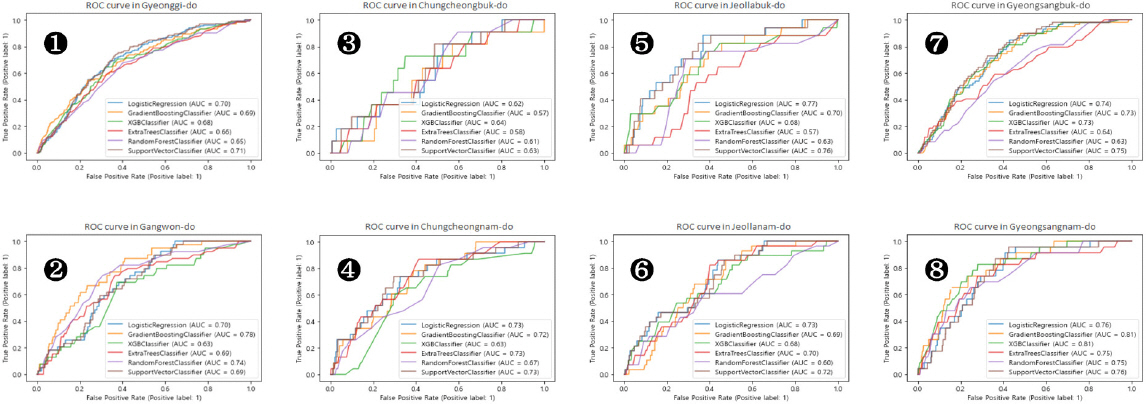





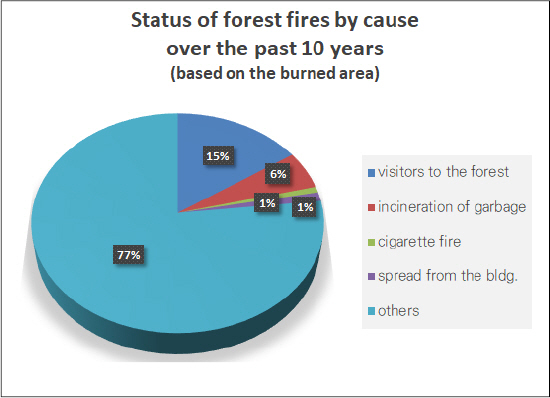
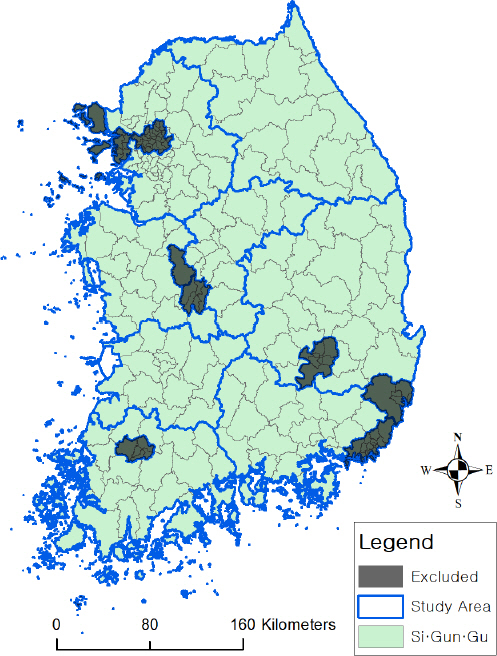
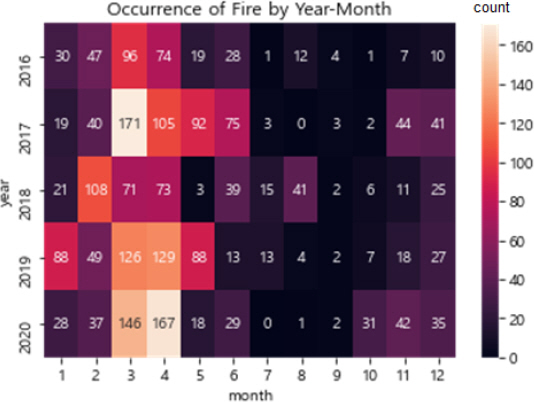

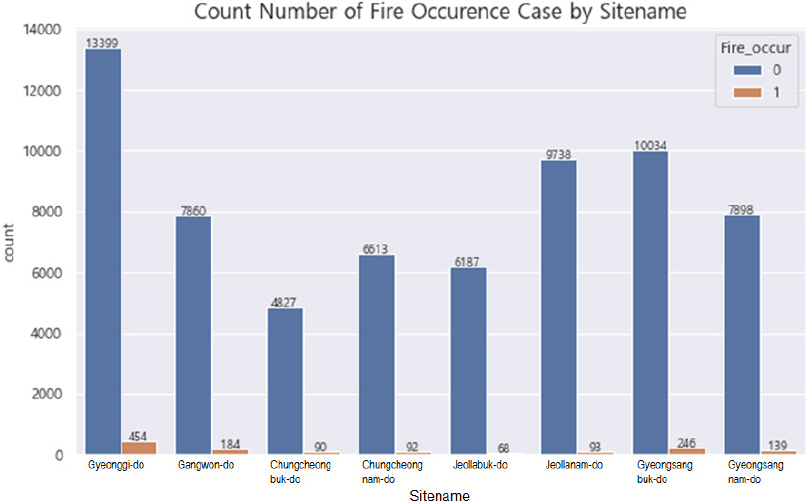
 (p-value > 0.01)
(p-value > 0.01)  (p-value > 0.1)
(p-value > 0.1)



